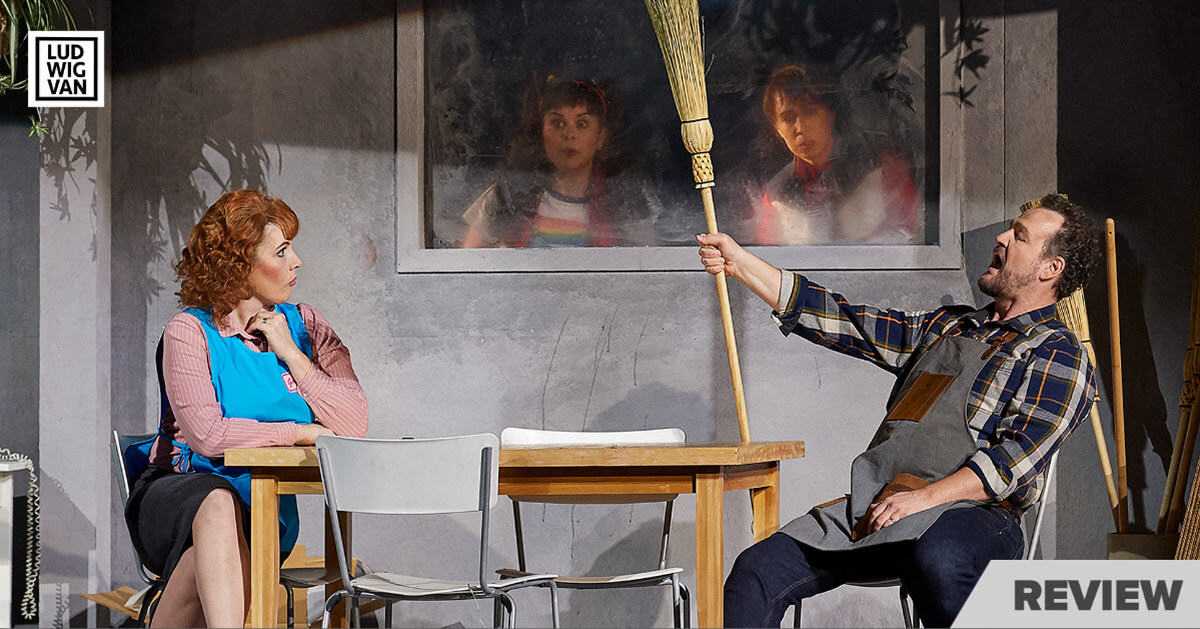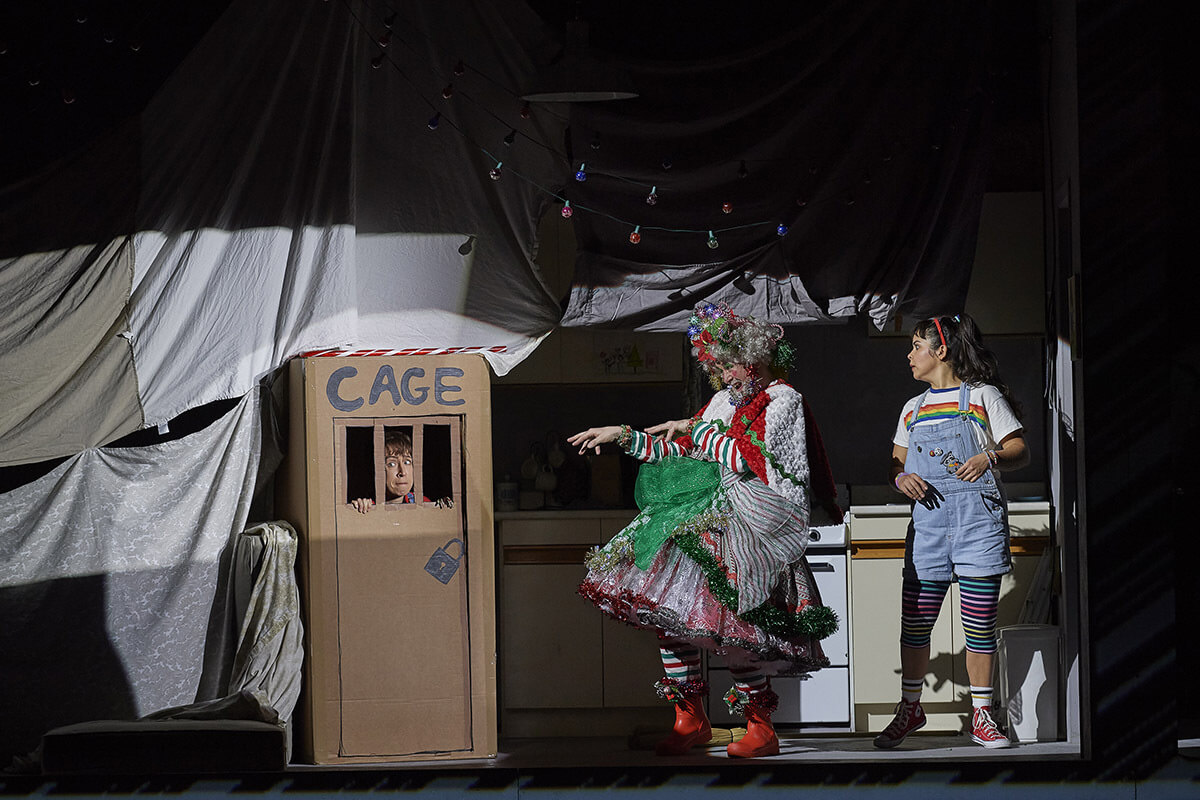
Simon Osborne (Gretel), Emily Fons (Hansel), Krisztina Szabo (Gertrude), Russell Braun (Peter), Michael Colvin (Hexe), Anna-Sophie Neher (Sandman/Dew Fairy); Johannes Debus, conductor; COC Orchestra; Canadian Children’s Opera Company Chorus; 7:30 p.m., February 6, 2020, Four Seasons Centre.
When it comes to operas based on European fairy tales, none can beat Engelbert Humperdinck’s Hansel and Gretel in popularity. A check of available statistics worldwide from seasons 2004 to 2019 has it ranked No. 14 out of over 2,000 different works. It received a total of 4,347 performances and 779 productions, beating out such warhorses as Lucia di Lammermoor (#20) and Otello (#27) — not too shabby, eh?
Why the popularity? First and foremost, Hansel and Gretel is arguably the best known of all the fairy tales by the Grimm Brothers. It hits all the right buttons, designed to help parents to control the naughty children by scaring the bejesus out of them. And when it’s combined with a scintillating score replete with Wagnerian overtones — Humperdinck was Wagner’s assistant in the production of Parsifal — what’s not to like, especially for the Wagner fan?
Having seen this piece twice in Germany, both times the normally staid German audiences quickly got uncharacteristically animated, particularly those who brought their children to the opera. Audiences around me were tapping their feet and semi-bouncing in their chairs, so much so that I nearly thought I was attending some Southern religious revival meeting!

This sort of unbridled enthusiasm with H&G simply does not exist on this side of the pond. It certainly didn’t happen last evening, at the premiere of a new production by Against the Grain’s Joel Ivany, in partnership with the Banff Centre. There was a very minor sprinkling of children in the audience to break up the sea of grey heads, but not enough of them to cheer up the old fogeys like yours truly. Those around me remained glum-faced for the most part. That said, the singers were well applauded at the end.
Opera audience demographics was one reason for the tepid response, but I feel the production had something to do with it. Ivany time- and place-shifted the story to present day Toronto, replacing the realistic (and beautiful) Maurice Sendak production seen in 1998. A re-imagined H&G set in Toronto is actually an intriguing idea. Fairy tales are nothing more than a reflection of the human condition, and it should be universal and timeless, as long as it’s executed with care and avoids contradicting the text as much as possible.
The Ivany H&G takes place in an apartment building somewhere in a poor neighbourhood in the GTA, in a set that resembles a Hollywood Squares game show design, with each “square” representing an apartment in the complex. If it works well in act 1, it’s much less effective in its storytelling in acts 2 and 3. How does one illustrate the children going into a forest to pick strawberries and finding the Witch’s hut? Ivany has the kids going to different apartment units asking for food. That’s only one of several oddities in this version.
Trying to fit a pre-existing story with its original text into a new take is easier said than done. This is particularly true if no text are altered. In this case, the limitations of the single unit set make the storytelling (especially in Acts 2 and 3) much more difficult. There are isolated moments that are quite amusing or clever, such as the building superintendent becoming the Hexe. On the other hand, the children getting lost — in a neighbour’s apartment? — is a bit of a head scratcher. The video projections helped, but not enough, but it’s par for the course when it comes to Regieoper.

The compensation last evening was largely musical, as we witnessed a very fine performance led by the COC Music Director Johannes Debus. The Humperdinck orchestration is best described as Wagner Light, and Maestro Debus wasn’t shy in underscoring that point, by bringing out all the Wagnerian sonorities. The orchestra was thrilling if loud — there were moments I thought I was in a performance of Der fliegende Hollander.
The superlative ensemble cast was a central part of the compensation, led by the two children of one’s dreams. As Hansel, mezzo Emily Fons’s gleaming tone was an unalloyed pleasure, and she was amazing as a boy. Soprano Simone Osborne won hands down as the most believable Gretel — a grown woman looking totally believable as a young girl. And she sang beautifully too, in a role with her name written all over it. Their Evening Prayer was one of many musical highlights.
The other principals were cast from strength. Tenor Michael Colvin had a triumph in his first Hexe — and it’s not an insult to say that he’s born to play the Witch. His music was sung (beautifully as much as the music would allow) and not barked. Veteran baritone Russell Braun captured the jolly nature of Peter perfectly, and his robust baritone never sounded better. Mezzo Krisztina Szabo made the best of the largely unsympathetic role of Gertrude.
The up-and-coming Ensemble soprano Anna Sophie Neher did double duty as the Sandman and the Dew Fairy — now if only one could focus on her lovely singing and not be distracted by her ridiculous costume! Kudos to the Canadian Children’s Opera Chorus under Teri Dunn for making a strong contribution in the final scene. All in all, a feel-good show ideal for the dreary Toronto winter, even if the Christmas decorations in the production are a bit anticlimactic in February. Never mind, just leave your sense of logic and power of reason at home. Six more performances to Feb. 21. Details.
#LUDWIGVAN
Want more updates on classical music and opera news and reviews? Follow us on Facebook, Instagram or Twitter for all the latest.
- SCRUTINY | Opera Atelier’s All Is Love Makes Triumphal Return - April 15, 2024
- SCRUTINY | From The Heart: Ema Nikolovska And Charles Richard-Hamelin Offer Unique Program At Koerner Hall - March 26, 2024
- SCRUTINY | The Glenn Gould School Spring Opera Presents A Superb Dialogues Des Carmélites - March 22, 2024



